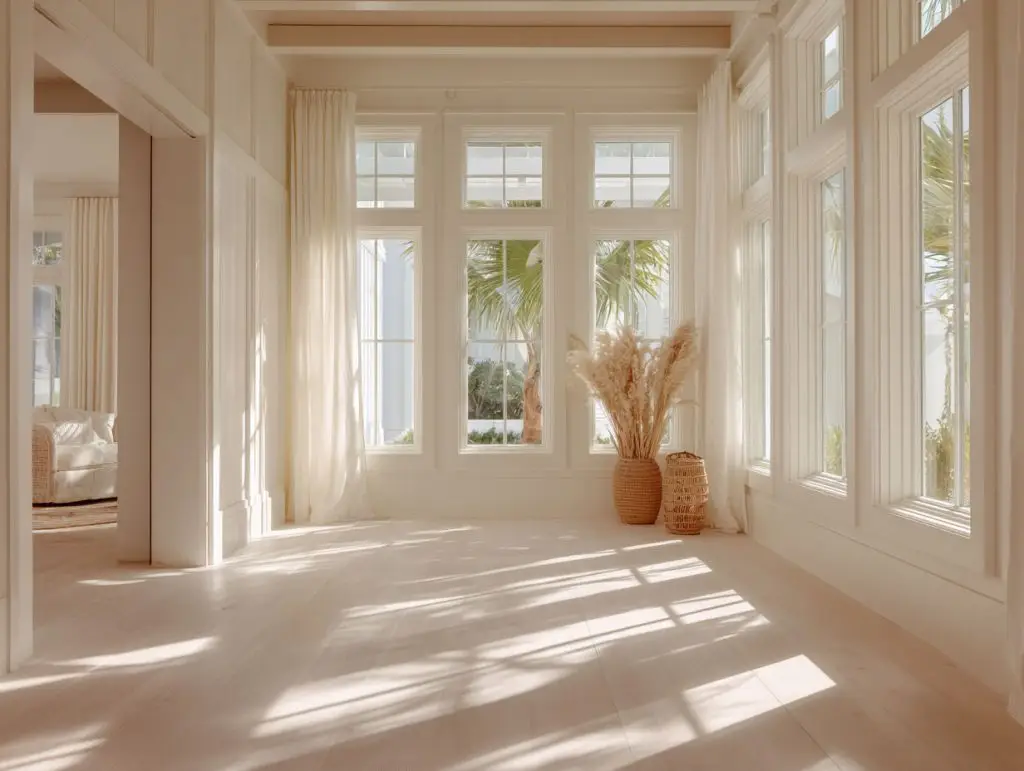
When Doing More Stopped Making a Difference
1. The Trap of “Productive Cleaning”
There was a time when I measured success in minutes spent cleaning.
The longer I scrubbed, the better I felt — or so I thought.
I’d spend entire Saturdays in my Destin home wiping, vacuuming, folding, polishing — and by evening, the result looked… the same.
The house wasn’t dirty, but it didn’t feel cleaner either.
That’s when I started noticing something strange: I was cleaning without seeing.
I wasn’t observing — I was performing.
2. The Missed Details
Destin homes have their own rhythm — you can’t fight the salt air, the humidity, or the light.
But I was trying to.
I’d wipe mirrors in the wrong part of the day, when the air was still damp.
I’d vacuum before dust settled after opening the windows.
I’d mop when the sun hit the floors directly, leaving streaks every single time.
All that energy — wasted.
Not because I did it wrong, but because I did it without awareness.
3. The Moment It Shifted
One afternoon, during a Sharky job at a beach condo, I was cleaning side by side with Maria — one of those veterans who seems to move slower but finish faster.
She told me, “Stop watching your hands. Watch the light.”
At first, I laughed.
Then I saw what she meant — the sunlight showed the exact path of dust in the air.
She wasn’t reacting to dirt; she was following its rhythm.
That single sentence — “Watch the light” — changed how I saw everything.
4. Observation Instead of Obsession
When I came home that evening, I tried it myself.
I stood in silence for a few minutes, just looking.
Where does the light land first in the morning?
Where does air move after I open the back door?
Which corners always stay cool and dry, and which gather humidity first?
Once I started noticing those patterns, I cleaned less — and achieved more.
Because now I was working with the house, not against it.
5. The Insight
Cleaning isn’t just action — it’s attention.
It’s not about how many tasks you do, but how accurately you respond to what’s actually needed.
Destin taught me that.
The salt, the light, the air — they’re all signals.
You just have to slow down enough to see them.
The Sharky Observation Method — How to Read a Room Before You Touch It
1. Step One — Stand Still Before You Start
Before I clean now, I don’t move.
I give each room 30 quiet seconds — no phone, no tools, no checklist.
I just look.
I notice:
- where the light falls,
- how the air moves,
- where dust collects,
- what feels heavy.
It sounds simple, but this pause rewired everything.
Instead of starting from habit, I start from information.
In coastal homes like Destin’s, that saves hours — because humidity, air, and light shift minute to minute.
2. Step Two — Let the Light Guide You
Maria’s advice — “watch the light” — became my rule.
Every Sharky cleaner knows: light doesn’t lie.
Here’s how I use it:
- Morning: soft light shows residue on glass and metal.
- Midday: reveals dust on high surfaces and uneven streaks.
- Late afternoon: exposes haze on floors and salt on mirrors.
If you clean with light, you clean once.
If you ignore it, you’ll clean twice.
3. Step Three — Follow the Air
Air carries both freshness and dirt.
When it’s still, dust settles faster; when it flows, rooms stay cleaner longer.
So I always check air before starting:
- Is there movement? Open a window for balance.
- Are vents blowing dust? Wipe them first, not last.
- Does humidity linger? Dehumidify before mopping — otherwise, the film returns overnight.
Think of air as your partner.
If it’s calm, work flows naturally.
If it’s heavy, nothing will stay clean for long.
4. Step Four — Listen Before You Wipe
This one sounds strange, but it’s real.
Each home has a sound signature.
When the air is balanced and surfaces are dry, sound moves softly.
When something’s off — echo, damp walls, overclosed windows — you can hear it.
That’s why Sharky cleaners don’t rush music into their work.
They listen for the “quiet tone” of a finished room — the one where the air and space sound settled.
5. Step Five — The 10-Second Scan Before Leaving
Before I walk out, I stop again — same as I began.
Ten seconds of looking.
If the room feels balanced — air moving, light even, no visual noise — I’m done.
If it feels static, I adjust: open a door, shift airflow, realign a chair.
It’s not perfection; it’s presence.
And that’s what makes Sharky homes in Destin different — they’re not just clean, they’re alive with awareness.
The Result
Since I started cleaning this way, I finish faster, waste less energy, and my home stays calm for days longer.
I realized that most of cleaning isn’t in the hands — it’s in the eyes.
And once you learn to notice, you’ll never go back to just wiping.
Because observation is the real secret ingredient in every clean home.
Read also: The Day I Realized My House Was Too Clean to Feel Like Home


